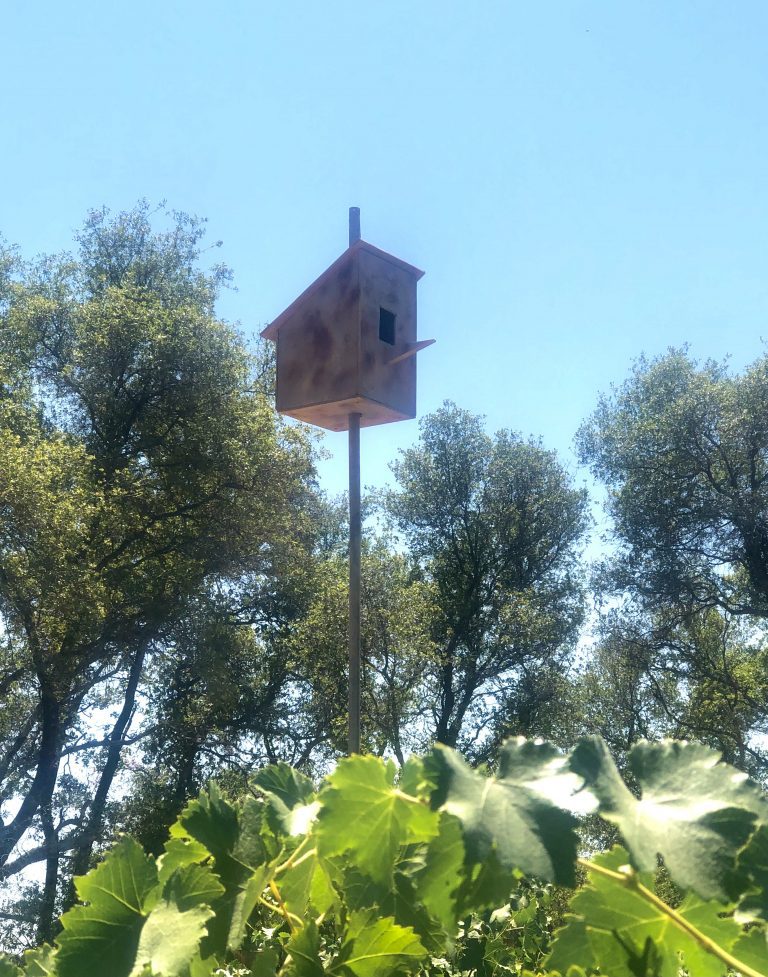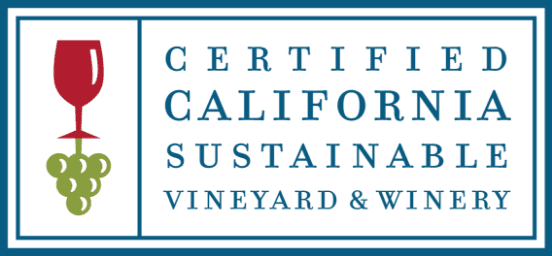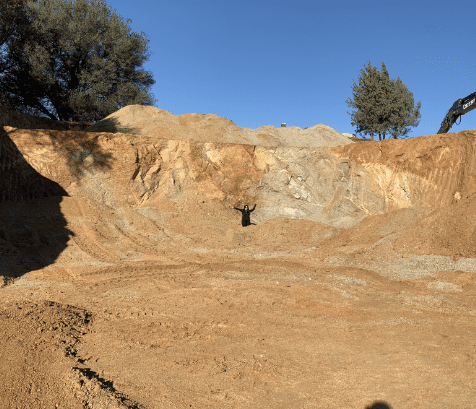Sustainability
As a three-generation family business Wise Villa Winery embraces the idea of future generations inheriting a healthy, flourishing and fully sustainable farming operation. At Wise Villa Winery and Vineyards we are committed to sustainability in terms of environmental, financial and also in terms of social. Many visitors to our tasting room are captivated by the beauty of our bucolic, rolling hill vineyards and would not imagine Wise Villa Winery takes sustainability as seriously as we do. We are committed to environmental improvements to the winery and vineyard that will grow and encourage sustainability in the wider community and garner social and economic growth within our area. But if they know what to look for, many of our earth friendly practices are in plain view.
It has been many years since the third-generation of family began working at Wise Villa Winery and as the younger family members entered the business it became apparent that this could easily become a fourth or perhaps fifth-generation business which was not something anyone considered just 10 short years ago. With that realization, came the acknowledgment that filling the soil and groundwater with chemicals would eventually create a detrimental scenario for our future generations of farmers and winemakers.
The determination was made to “do no harm” to the microenvironment where we work and live and, to the degree possible, leave the ecosystem healthier than we found it. We plan to do this by following the guidelines set out in the California Sustainable Winegrowing Alliance Certification Workbook and using the information obtained in the Ambassador Certificate. We shall be consistently working towards improvements in all aspects of a sustainable future for both the winery and the wider community of Placer County.

Wastewater Treatment
2018
2019
Soil Contamination Prevention
The second area of concern was the treatment of our soil and this remains a continuous discussion topic to this date. Deliberating the potential solutions endlessly, we looked at solutions ranging from herds of sheep with an appetite to traditional weed eating, yet none of these solutions satisfied our sustainability goals… although we may add sheep into the mix at a future date when we figure out how to keep them from escaping the vineyard and eating the landscaping. Once again, we decided to invite students from UC Davis’s Agriculture department to look at our operation. We did not expect that solving the soil concern was going to be more complicated and time consuming than solving our wastewater issue. However, with some assistance from UC Davis we found resolution by implementing a multistage soil management plan. Intuitively we knew that our days of using chemicals would soon be coming to an end. Our primary concern surrounded the reduction of pesticides and herbicides which would cause a lower harvest yield, ironically forcing us to purchase grapes from distant producers who are likely to be applying the very chemicals we were eliminating.
We knew we needed to keep bugs and rodents off of our vines in order to maintain a crop yield capable of accommodating our annual wine production goals. The next consideration was weed control. While most vineyards use chemical herbicides to keep the weeds under control, we decided to begin phasing out all herbicides and opted for planting a nutrient rich cover crop consisting primarily of grasses. The results were predictable, two-foot-tall grass between vine rows with bugs and mice galore. So, we mowed all the grass which resulted in the bugs and mice taking up residence in the vines. This unforeseen and undesirable result was anything but sustainable, unless you were a mouse. At this point an argument could have been made for abandoning the entire sustainability initiative and the mice were doing their best to convince us to do just that. After conducting a substantial amount of research, we learned that mowing every other row would keep the grass somewhat under control, while providing cover for the insects and mice in the remaining grass. In short, the bugs and mice are less exposed to predators in the grass than up in in the vines. We were close to having the problem solved except we really did not care for the idea of having any rodents in the grass between the vine rows. But once again a solution availed itself and once again it was “Primitive and Simplistically Brilliant”. This is where mother nature took over and technology was relegated to taking a long ride in the back seat. It was a pretty simple equation to understand: bugs eat grape vines; mice eat bugs, so what eats mice? The answer was staring back at us from our own label. Answer: Owls eat mice. So, we installed owl boxes providing an inviting nesting spot for Barn Owls and their offspring. The owls keep the mouse population under control, the remaining mice keep the insects under control, and all of this is now accomplished down in the grass instead of up in the vines.

CARBON RETENTION
Wise Villa Winery is passionate about being sustainable in as many ways possible, including its carbon retention. Last year, Wise Villa Winery sequestered up to 18,5 tonnes of CO2 through its purchase and utilization of cork stoppers based on the CO2-balance studies carried out by Pricewaterhouse Coopers and/or Ernest and Young during the twelve month period from January 1st to December 31st 2020. This number has been independently validated and certified by Pricewaterhouse Coopers and/or Ernest and Young. The finds, are the only ones to date that underwent a multi-closure comparative peer review, indicating when considering sequestration by the ecosystem made feasible by the cyclic extraction of cork, a retention capacity up to 309 grams of CO2 is associated with every natural cork stopper and as much as 562 grams with a sparkling wine stopper, in stark contrast to the COs emissions to each plastic stopper (up to 14.8 g/sealant) and to aluminium caps (up to 37.2/g cap). We are thrilled with the carbon retention numbers of 2020 and Wise Villa Winery is determined to continue reducing our carbon footprint every year.

2020
Unexpected recognition
Wise Villa Winery was one of only six earliest wineries in the world using the BioFiltro worm-powered wastewater treatment system. Due to our sustainability initiatives and accomplishments, we earned our status as a certified California Sustainable Winery and Vineyard. We now proudly display the logo on our winery entry gate and in various locations throughout our vineyard.
The journey has been anything but easy and is far from over with several challenging improvements planned for 2021.
2020
The biggest challenge to date: The Eco-friendly Winery
We engaged the third phase of our sustainability plan in the Fall of 2020, when we began construction of a new eco-friendly winery which is scheduled for completion soon next year. As you might imagine, keeping a large production winery at 60 degrees indoors when the outdoor summertime temperature regularly exceeds 100 degrees takes a colossal amount of electricity. At first glance reducing our energy footprint while doubling the size of our winery appeared to be nearly impossible. Other than solar power, there are very few reliable options and reliability is crucial due to heat being the number one factor in wine spoilage. So, as with wastewater and soil preservation, we blindly began the search for a seemingly elusive solution. But just like our previous ecofriendly endeavors, the solution proved to be “Primitive, and Simplistically Brilliant” and easy to accomplish. The new winery will be twice the size of our existing facility but, in spite of doubling its size, we expect to reduce our cooling related energy consumption by 60% below our current usage. This will be accomplished by building the winery into the mountain side deep enough so three sides will have earthen walls which radiate cool air into the winery year around while using no electricity.


Additionally, we have chosen to supplant traditional indoor refrigeration systems with highly effective Geothermal cooling technology. We have contracted with locally owned Youngdahl Engineering of Nevada City to utilize the mountain beside the new winery. Youngdahl has designed a network of subterranean water circulation pipes intended to slowly circulate water deep into the cool earthen mountainside and throughout the winery foundation resulting in radiant cooling temperatures between 55–60 F°. These temperatures and humidity levels simulate the actual temperatures and humidity levels found in natural caves. Producing cool air is only part of the solution as our plans also include a new, little known construction approach which injects Styrofoam between the metal wall studs at the factory prior to the construction process. This produces what amounts to a giant, winery-sized ice chest with a remarkable insulation rating of R50. What does all of this mean? The results are so extraordinary that we have saved them for last. The projected hourly energy requirements for cooling the new winery using Geothermal technology and Styrofoam construction are the equivalent of a common oscillating house fan.
2021
With 2021 ticking away, we are already contemplating what 2022 will bring and we are actively studying options including solar, wind and micro-turbine electricity production. The Wise Villa family expects to continue our pursuit of sustainable solutions at a blistering pace. We invite and challenge other wineries to join the race, to come see our progress, and talk about solutions. Our philosophy is to freely share our technology findings and assist other wineries with their environmental endeavors. There are no losers in this race, in fact everyone wins if we succeed.





